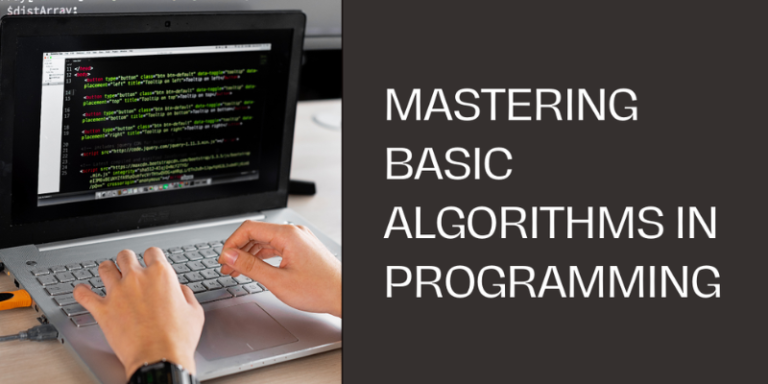In the realm of computer science, algorithms are fundamental constructs that define a sequence of operations to solve specific problems or perform tasks. Understanding basic algorithms and the process of programming an application involves not only writing and optimising these algorithms but also comprehending the roles of various tools in the code generation process. This article delves into the definition of basic algorithms, the relationship between algorithms and code, and the stages involved in programming an application, with a focus on the roles of the pre-processor, compiler, linker, and interpreter.
Definition of Basic Algorithms
An algorithm is defined as a finite set of well-defined instructions aimed at performing a specific task or solving a problem (Cormen et al., 2009). One classic example of a basic algorithm is the Bubble Sort. Bubble Sort is a simple sorting algorithm that repeatedly steps through the list to be sorted, compares adjacent elements, and swaps them if they are in the wrong order. This process is repeated until the list is sorted.
Algorithm: Bubble Sort
- Start at the beginning of the list.
- Compare the first two elements.
- If the first element is greater than the second, swap them.
- Move to the next pair of elements and repeat the comparison and swap if necessary.
- Continue this process until the end of the list is reached.
- Repeat the entire process for the entire list until no swaps are needed.
Relationship Between Algorithms and Code
The relationship between algorithms and code is intrinsic. Algorithms serve as the blueprint for solving problems, while code is the implementation of these blueprints in a programming language. The process of translating an algorithm into code involves breaking down the algorithm into smaller steps and using the syntax and semantics of a programming language to write instructions that a computer can execute.
For instance, the Bubble Sort algorithm can be implemented in Python as follows:
python
def bubble_sort(arr):
n = len(arr)
for i in range(n):
for j in range(0, n-i-1):
if arr[j] > arr[j+1]:
arr[j], arr[j+1] = arr[j+1], arr[j]
return arr
This code translates the high-level steps of the Bubble Sort algorithm into a sequence of instructions that a computer can follow.
The Code Generation Process
The process of programming an application involves several stages, each playing a crucial role in transforming high-level code into executable programmes.
These stages include pre-processing, compiling, linking, and interpreting.
- Pre-Processor: The pre-processor is the first stage in the code generation process. It handles directives for source code, such as macro substitution, file inclusion, and conditional compilation. The pre-processor produces an expanded version of the source code, which is then passed to the compiler (Kernighan & Ritchie, 1988).
- Compiler: The compiler translates the high-level source code into machine code or an intermediate code. It performs syntax analysis, semantic analysis, and optimisations to generate efficient code. The output of the compiler is typically an object file containing machine code (Aho et al., 2006).
- Linker: The linker combines multiple object files and libraries into a single executable file. It resolves references between object files and assigns final memory addresses to various parts of the programme. The linker ensures that all external references are correctly connected, producing an executable file ready for execution (Louden, 2003).
- Interpreter: Unlike compilers, interpreters execute code line by line, translating each high-level instruction into machine code on the fly. Interpreters are commonly used in scripting languages and provide immediate feedback during code development (Sebesta, 2016).
Understanding basic algorithms and the process of programming an application is essential for any software developer. Algorithms provide the logical foundation for solving problems, while the process of code generation involves several stages, each critical for transforming high-level instructions into executable programmes. By mastering these concepts, developers can write efficient, reliable, and maintainable code.
References
Aho, A. V., Lam, M. S., Sethi, R., & Ullman, J. D. (2006) Compilers: Principles, Techniques, and Tools (2nd ed.). Addison-Wesley.
Cormen, T. H., Leiserson, C. E., Rivest, R. L., & Stein, C. (2009) Introduction to Algorithms (3rd ed.). MIT Press.
Kernighan, B. W., & Ritchie, D. M. (1988) The C Programming Language. 2nd ed. Prentice Hall.
Louden, K. C. (2003) Programming Languages: Principles and Practice. 2nd ed. Thomson Learning.
Sebesta, R. W. (2016). Concepts of Programming Languages. 11th ed. Pearson.









